Vinegar, known for its acidic taste and preservative qualities, has been a staple in many cultures for centuries. Vinegar is produced through the fermentation of ethanol by acetic acid bacteria. This process involves two stages: the conversion of sugars into alcohol (as in wine or cider) and then the transformation of alcohol into acetic acid. Different raw materials like grapes, apples, rice, and barley are used, leading to a variety of vinegar types, each with a unique flavor profile.
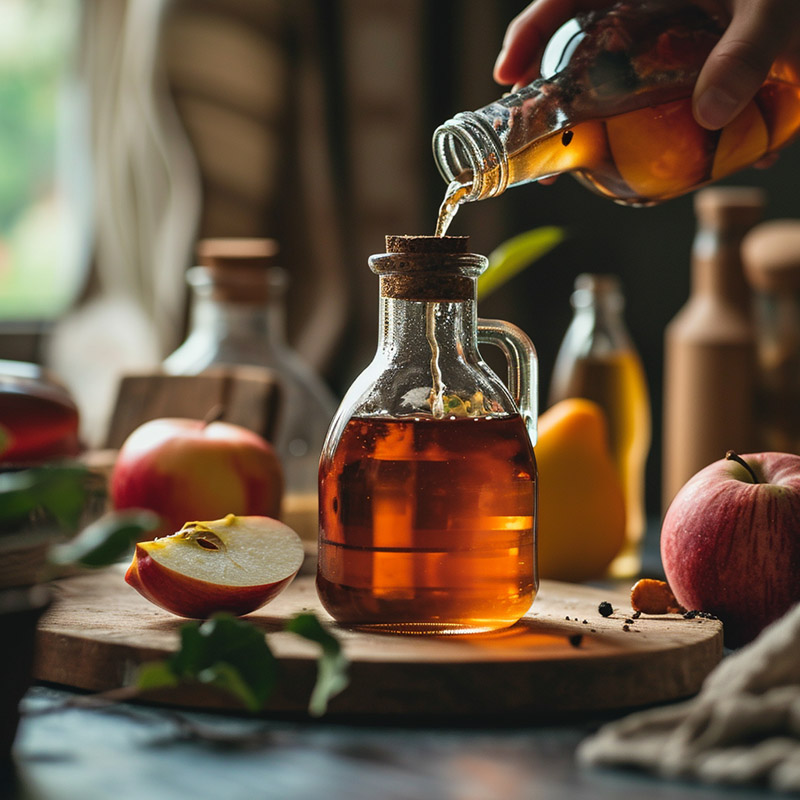
Vinegar is a fundamental ingredient in numerous cuisines. It's used for seasoning, as in salad dressings, marinades, and sauces. Its acidic nature enhances flavors and tenderizes meats.
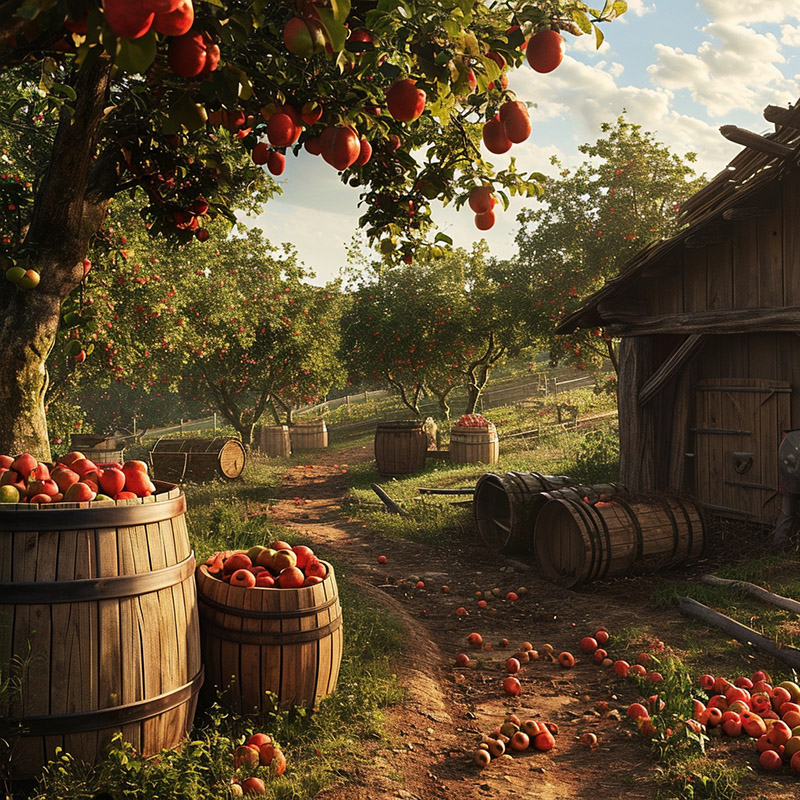
Its preservative properties make it ideal for pickling vegetables and fruits, a practice seen in many cultures from Europe to Asia.

Balsamic vinegar in Italy, rice vinegar in Asian cuisine, and apple cider vinegar in America and Europe are examples of how different cultures have their unique vinegar varieties, integral to their culinary heritage.
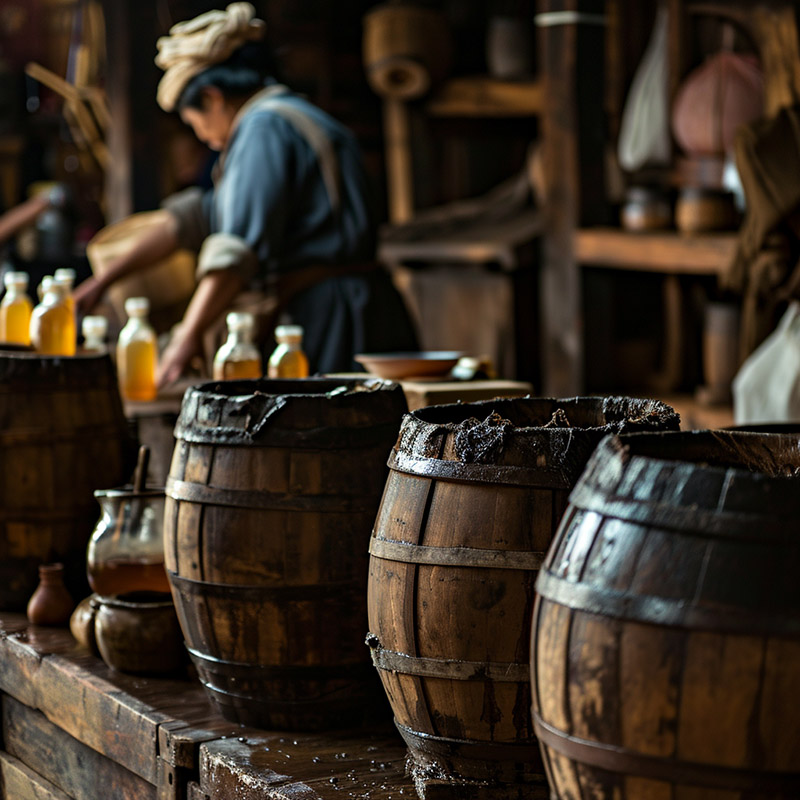
Historically, vinegar has been used for its supposed medicinal properties, including as a digestive aid and a remedy for a variety of ailments.

Due to its acidic nature, vinegar is a potent cleaning agent, used for sanitizing and cleaning in homes.
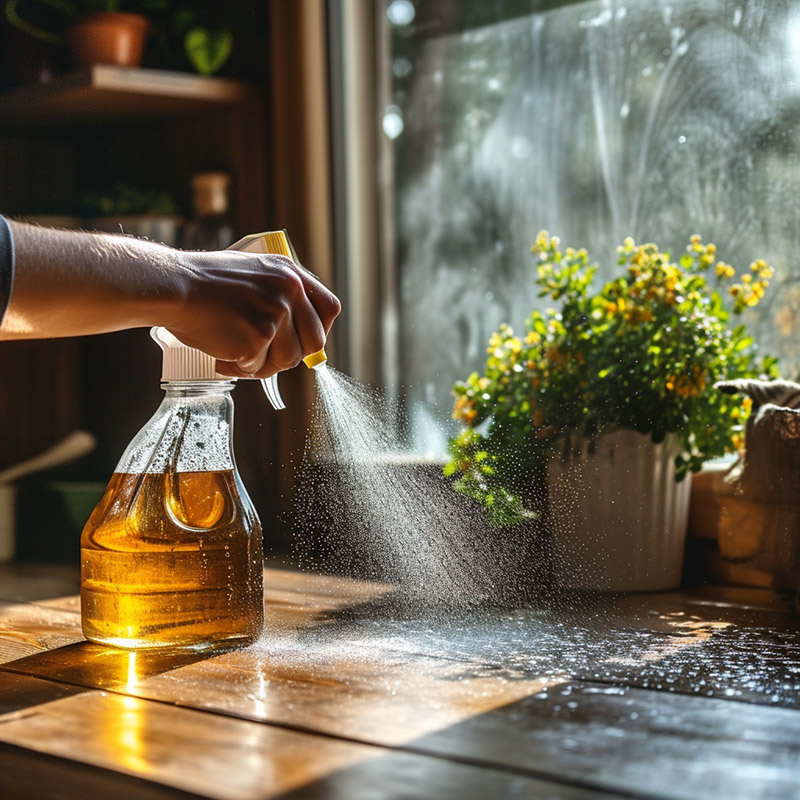
Vinegar also finds applications in agriculture and industry, showcasing its versatility beyond culinary uses.
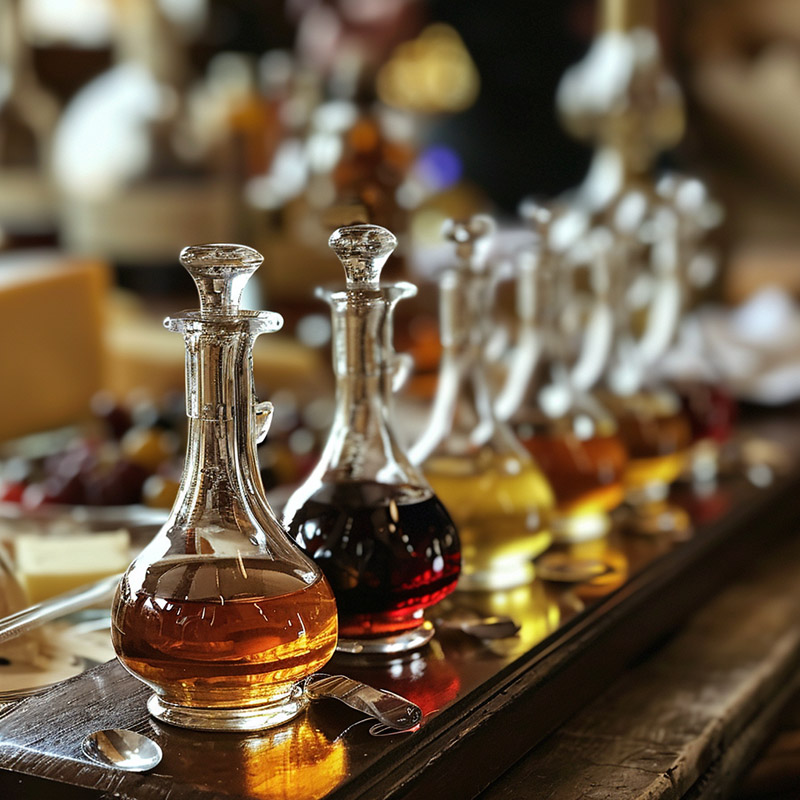
Vinegar's role in global cultures transcends culinary boundaries, marking its presence in traditional practices, healthcare, and even in industrial applications. Its production methods and diverse uses are a testament to its enduring significance in human society.

Vinegar, a dilute solution of impure acetic acid, prepared by the acetous fermentation of alcohol or of substances which yield alcohol when suitably decomposed (ordinary vinegar), or obtained from the products resulting on the dry distillation of wood (wood vinegar). Ordinary or table vinegars, which contain, in addition to acetic acid, small quantities of alcohol, higher acids such as tartaric and succinic, various esters, albuminous substances, etc., are produced solely by acetous fermentation, wood vinegar being only employed in certain' arts. Ordinary vinegar has been known from the earliest times, and its power of combining with or dissolving mineral substances caused the alchemists to investigate its preparation and properties. They failed, however, to obtain pure acetic acid, although by distillation they prepared more concentrated solutions (spiritus Veneris). In 1697 Stahl showed that vinegar could be concentrated by freezing out part of the water, and, better, in 1702, by neutralizing the acid with an alkali and distilling the salt with oil of vitriol. A notable improvement was made in 1789 by Lowitz, who showed that the dilute acid could be concentrated by repeatedly passing it over charcoal powder, and by cooling he obtained a crystalline substance named in 1777 by Durhnde, "glacial acetic acid." The presence of an acid substance in the products of the dry distillation of wood was mentioned by Glauber in 1648 and received the name of pyroligneous acid. Its identity with acetic acid was demonstrated by Vauquelin in 1800.
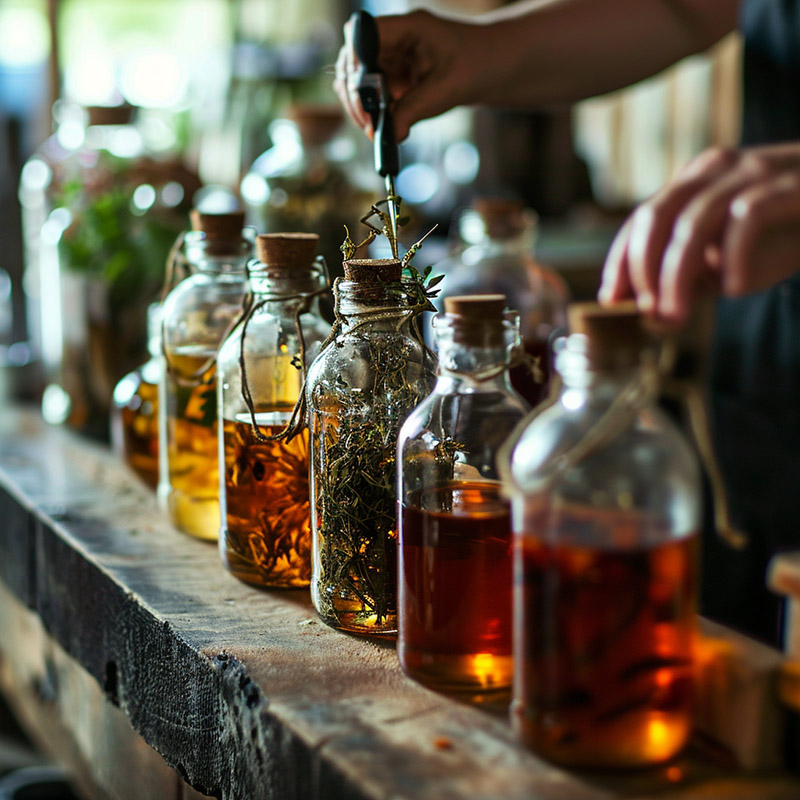
There are two methods of acetous fermentation in use: the "quick" process, proposed in 1720 by Boerhaave and introduced by Schitzenbach in 1823 (analogous processes were proposed at about the same time by Wagmann in Germany and by Ham in England), and the older or "slow " process. In the "quick" process advantage is taken of the fact that the fermentation proceeds more quickly when a large surface of the liquid is exposed to air. Any alcoholic liquid can be treated. The apparatus consists essentially of a vat divided into three portions: the lowest, which is separated from the one above by a grid or false bottom, serves for the collection of the vinegar; the central portion, which is by far the largest, is the chamber wherein the fermentation is effected; and it is separated from the topmost section by a disk perforated with holes about the size of quills through which thin strings lead into the upper part of the central section. The purpose of this disk is to subdivide the liquid placed upon it into drops so as to increase the surface of the liquid. The sides of the vat enclosing the lowest portion are provided with a ring of holes to admit air to the tub; and the vat is enclosed with a tightly fitting lid perforated by a hole through which the liquor to be fermented is admitted and the air drawn upwards from the base escapes. The central chamber is filled with some material of large surface. The commonest are beech-wood shavings, which, before use, must be carefully freed from all extractives by washing and steaming, then dried, and finally soured by immersion in hot vinegar for twenty-four hours. The fermented wort, prepared in various ways and of varying composition, or wine, is warmed to about 38° C. and then fed into the upper chamber. Falling on to the shavings, the surface is largely increased, and the fermentation which ensues maintains the temperature at about 37°, and draws a current of air upwards through the shavings, which after a time become covered with the so-called mother of vinegar. If the liquid contains only 4% of alcohol, it is completely converted into acetic acid, but stronger liquors require to be passed through the vat three or four 'times. Some of the alcohol (and consequently some acetic acid) is carried away by the air which escapes to the top of the vat; this is avoided in some factories by leading the air over or into water, whereby the alcohol and aldehyde are recovered. The same is effected in Singer's generators, which are coupled together in tiers.
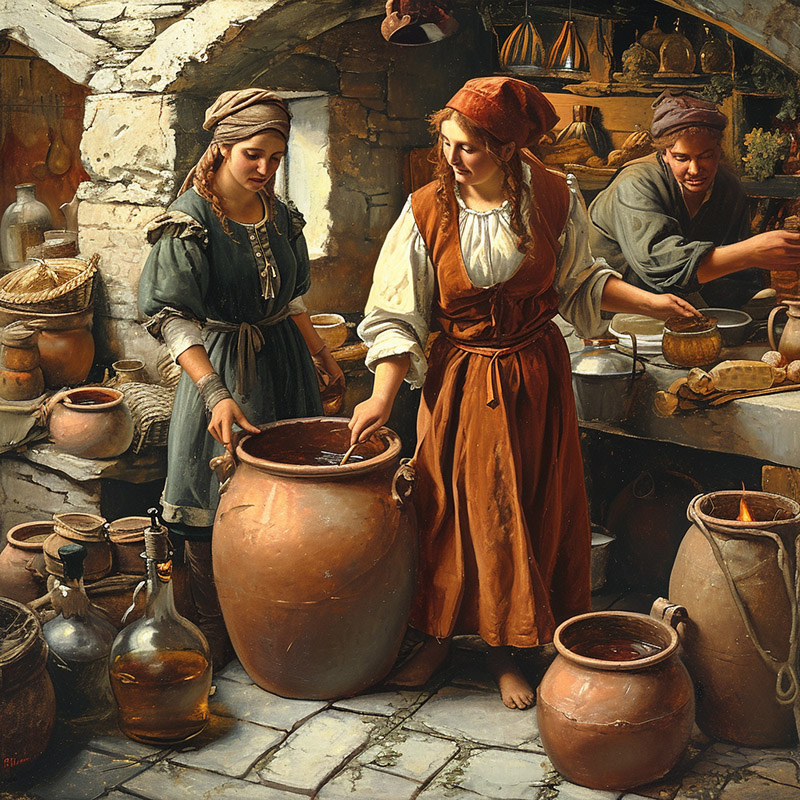
For making wine-vinegar by the slow process, full-bodied wines about one year old and containing so % of alcohol this amount being obtained, when necessary, by blending) are preferred; and they are clarified by standing with beech shavings upon which the lees deposit. The fermentation is carried out in casks holding from so to loo gallons; these casks are repeatedly extracted with water in order to prevent any impurity finding its wayy into the vinegar; also it is found that the casks foul after about six years' use, when it is necessary to remove the deposits of argol, yeast sediments, etc., and re-extract with water, after which they are again fit for use. In conducting the fermentation the cask is one-third filled with boiling strong vinegar and allowed to stand for eight days. Nine pints of the wine are now added every day until the cask is twothirds full, and the mixture is allowed to stand for fourteen days. After this interval from so gallons to half the contents of the cask are drawn off, and more wine added. The working temperature is about 25°. The progress of the operation is shown by the white froth which appears on a spatula after immersion in the liquid; if it be reddish, more wine must be added. In certain parts of France, Holland and of the Rhine district a different procedure is adopted. Two casks, fitted with false bottoms on which are placed vine cuttings, are taken; one cask is completely filled with the wine, whilst the other is only half filled. The acetification proceeds more rapidly in the second cask, and after twenty-four hours half the contents of the first cask are transferred to it, and the process repeated. The product is settled in casks containing birch wood+ and after fourteen days it is put upon the marllet.
In preparing malt vinegar, an infusion of malt is prepared by extracting it with water at 72°, then at a higher temperature and finally at the boiling-point. After cooling the extracts are fermented with yeast, and the product kept for some months before acetification. This step can be effected by the quick process as described above, or by the slow process. In the latter the liquid at 25° is transferred to barrels lying on their sides and the fermentation allowed to' proceed. When the process is complete the product is filtered through rapes in a fining tun. This is a cask fitted with a false bottom in which are placed spent tanner's wood, shavings, or, better, the pressed stalks and skins of grapes and raisins from wine manufacture. Household vinegar is made in upright casks; after twenty-four hours it is transferred to a similar cask, and the process repeated in a third and fourth cask. Malt vinegar is sold in four strengths designated 18, 20, 22, 24, the last being "proof" vinegar, containing 6% of acetic acid and having a specific gravity of 1.019. These numbers represent the grains of dry pure sodium carbonate, which are neutralized by one fluid ounce of the vinegar.
Several other vinegars are made. Crystal vinegar is ordinary vinegar decolorized by treatment with animal charcoal. Ale vinegar is prepared from strong sour pale ale; it has a tendency to putrefy. Glucose or sugar vinegar is made by first fermenting amylaceous substances to alcohol, and then acetifying the alcohol. Compound table vinegars are made by digesting ordinary vinegar with condiments such as pepper, garlic, capers, etc.; whilst aromatic vinegars popularly used in vinaigrettes on account of their refreshing, stimulating pungency are obtained by distilling ordinary vinegar with plants, perfumes and aromatic substances. Medicinal vinegars are prepared either by digestion or distillation of vinegar with various drugs. Vinegar, however, is not now much used in medicine, although occasionally taken, under a false impression, in order to reduce obesity.
Wood vinegar is not used in cooking, as it lacks those substances which render ordinary vinegar palatable. It is largely manufactured for conversion into pure acetic acid and acetom; and also for use as an antiseptic and wood preservative.